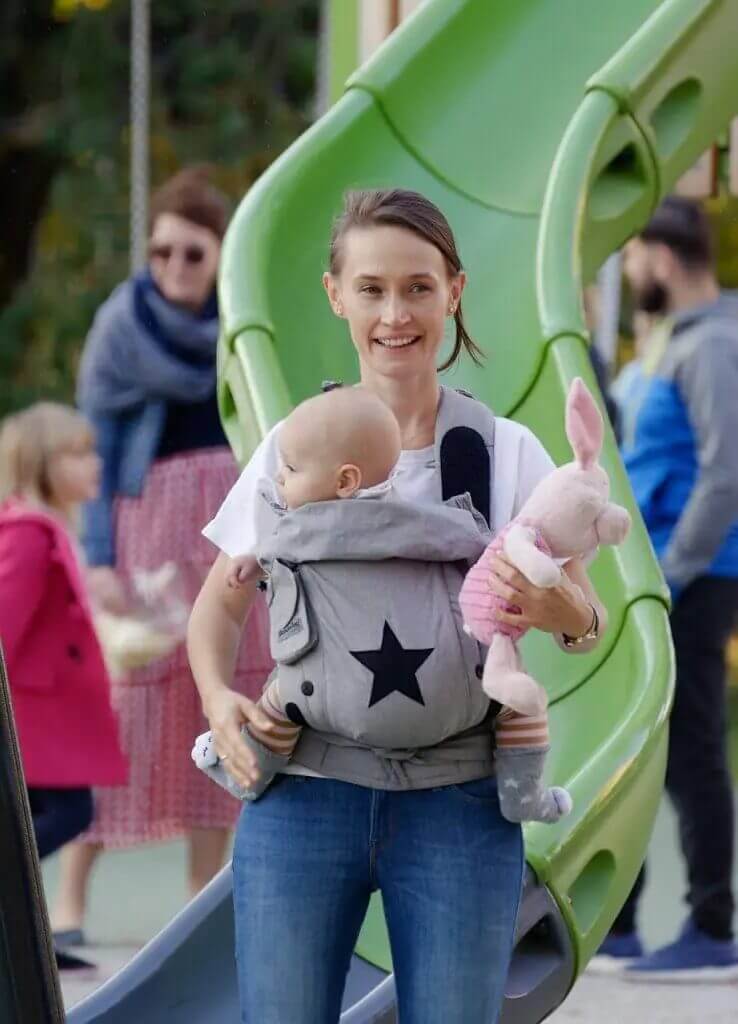
How to choose a carrier for your baby
Before you know it, it will be time to choose a carrier for your little one.
When selecting a carrier for your baby, there are many important considerations to keep in mind—both for the parents and the child.
From an orthopedic perspective, proper support and positioning can promote healthy development of the vertebral column and pelvis, while also helping to prevent discomfort or injury.
That is why this post was written by senior pediatric orthopedist Dr. Ronen Sever, and is based on guidelines from the American Academy of Pediatrics as well as other professional associations.
Here are the key points to consider when choosing a baby carrier.
What is the age and weight cutoff for use of carriers?
Age has no significance when it comes to carriers, and you can use a carrier from birth.
Nonetheless, according to European safety guidelines, carriers should only be used with babies who weigh at least 3.5 kg.
Can carriers be used before the screening ultrasound for hip dysplasia is performed?
Indeed, there is a recommendation mentioned on our website about performing a screening ultrasound to rule out hip dysplasia in babies around the age of 4–6 weeks.
Carriers can be used before this test, but we recommend that the baby faces the parent, as at this age the child is unable to support the weight of their head.
The baby can be turned outward at around 3–4 months of age, once they are able to hold their head up properly and leg position becomes less critical.
Position of the thighs
Make sure the baby is positioned in an “M” shape, with the knees lifted above the buttocks. This position supports healthy hip development for all babies, especially those at risk of hip dysplasia.
Support of the vertebral column
Look for a carrier that encourages the natural alignment of the vertebral column. The design should allow a soft arch in the baby’s back and provide neck support until the age of 3–4 months, or until the baby can hold their head up independently.
Distribution of weight
Choose a carrier with thick, padded straps and a supportive belt. This helps distribute the baby’s weight evenly across the parent’s body and reduces strain on the back and shoulders.
Adaptability
Find a carrier that adjusts to both the child’s growth and the parent’s body. Adjustable carriers offer long-term comfort, safety, and support.
Easiness of use
Check how easy the carrier is to put on and take off. A user-friendly design allows for quick and comfortable adjustments, which is especially important when the baby is irritable.
Breathability
Choose a carrier made of breathable material to ensure both the baby and parent stay comfortable—especially in warmer climates.
Safety
Ensure the carrier includes safety features such as secure straps. The design should prevent the baby from slipping out of the carrier. All carriers should have European or American certification of approval.
In summary, choosing the right carrier for your baby can support healthy development, ensure parental comfort, and strengthen the emotional bond between parent and child.
Prioritize ergonomic designs that are both comfortable and supportive, so you can enjoy the benefits of babywearing without compromising your or your baby’s health.
Of course, you can always consult with a pediatrician or pediatric orthopedist if you have concerns about hip development or carrying techniques.
Good luck.
For comments and questions, please register
